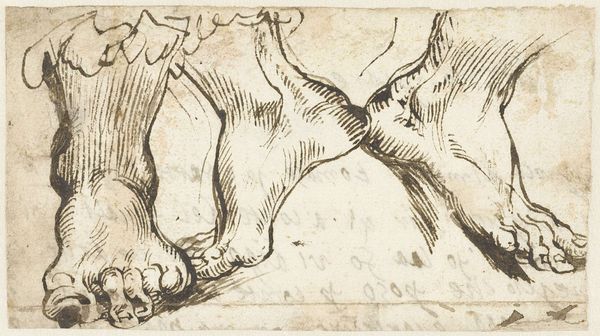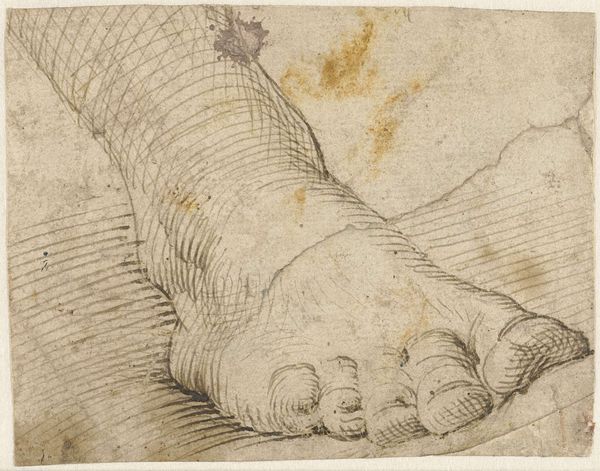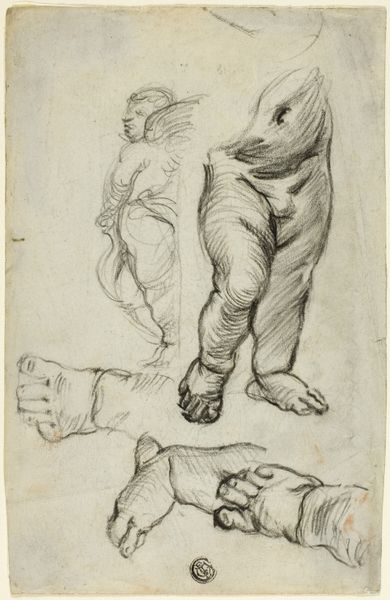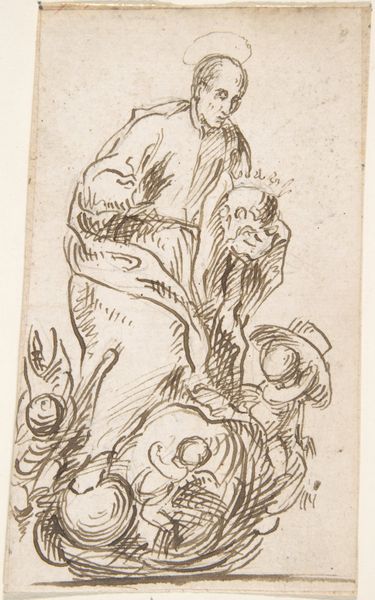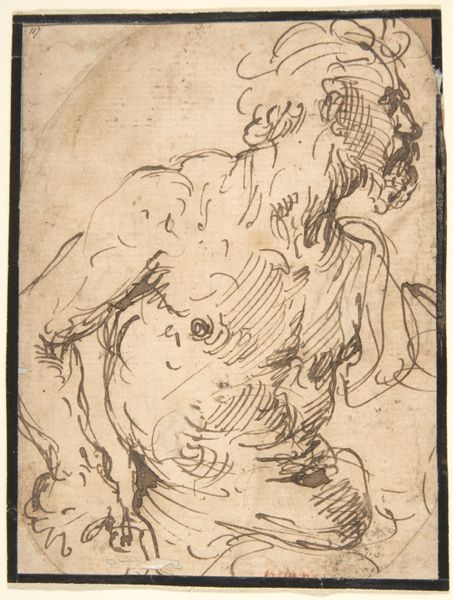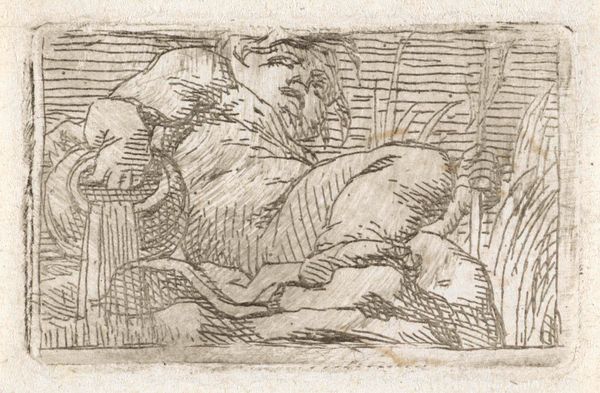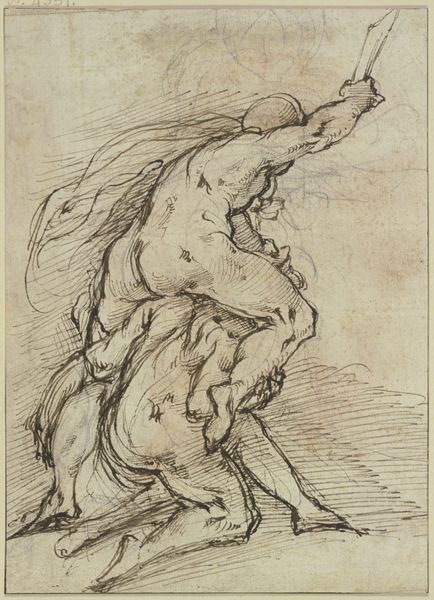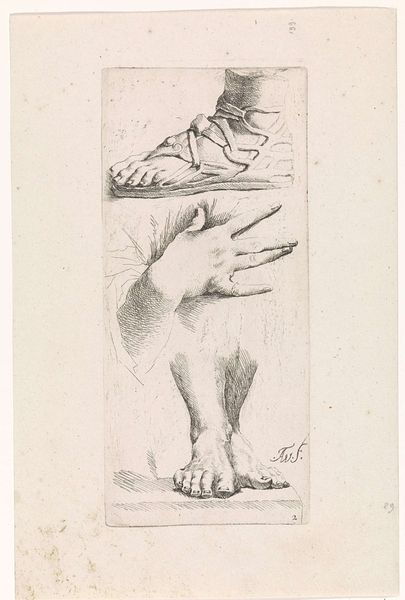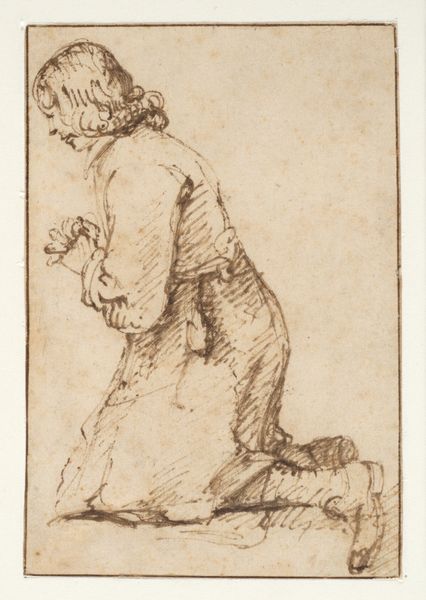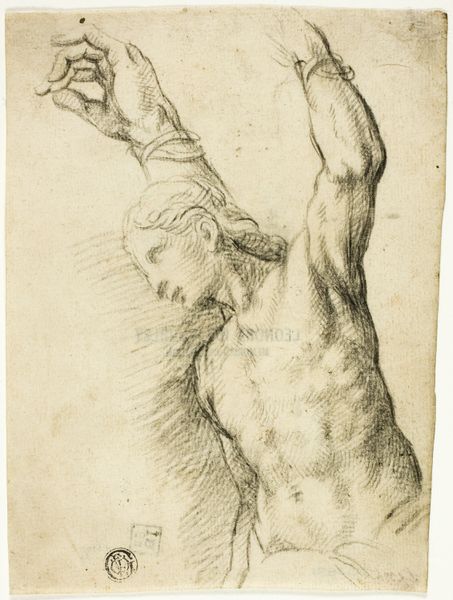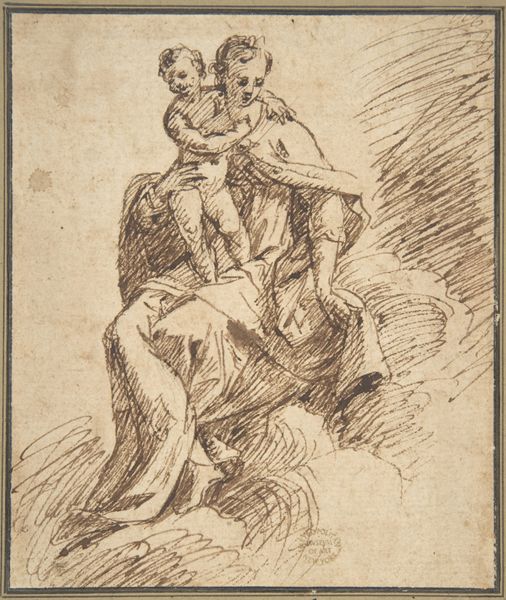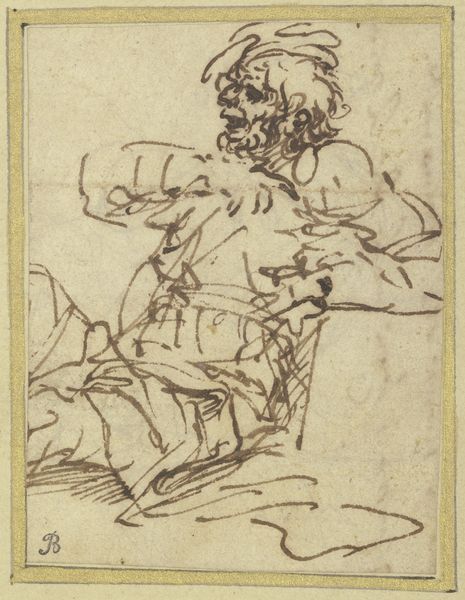
drawing, ink
#
portrait
#
drawing
#
high-renaissance
#
ink painting
#
head
#
figuration
#
ink
Copyright: Public Domain
Editor: This ink drawing by Titian, created around 1519-1520, is titled "Study of a head in profile, three feet and a lower leg". It feels quite anatomical and fragmented. What do you make of the relationship between these studies? Curator: It's a glimpse into the High Renaissance workshop, where art wasn't just about idealized beauty, but also about dissecting and understanding the human form. How do you think the emphasis on anatomical accuracy affected art's status and role in society back then? Editor: I imagine it lent a certain scientific legitimacy to artistic pursuits? Like they were exploring profound truths? Curator: Exactly! Consider the broader context: this was a period of immense cultural and intellectual ferment, when artists increasingly saw themselves as intellectuals and scientists as much as craftspeople. Dissections were occurring, although illicitly at times, with artists involved and changing the way artists represent the body, influencing what society found acceptable to view and even desire. Do you notice any connection to contemporary views on the ideal form? Editor: Well, perhaps in how closely it mimics real, albeit idealized, anatomy rather than religious or symbolic interpretations. How do you see it influencing later generations? Curator: Titian's influence extended far beyond Venice. By emphasizing close observation and anatomical understanding, artists raised the status of their profession and paved the way for new modes of realism. The detailed rendering becomes an ideal. That, combined with portraiture’s societal role in conveying status through resemblance, made his methods and that realism desirable, and of immense cultural importance. Editor: This has definitely reshaped my perspective, especially considering the changing roles of artists during that era. Curator: Mine too. It makes me consider the modern implications of studying older, less valued works to trace the origin stories of popular styles.
Comments
No comments
Be the first to comment and join the conversation on the ultimate creative platform.
